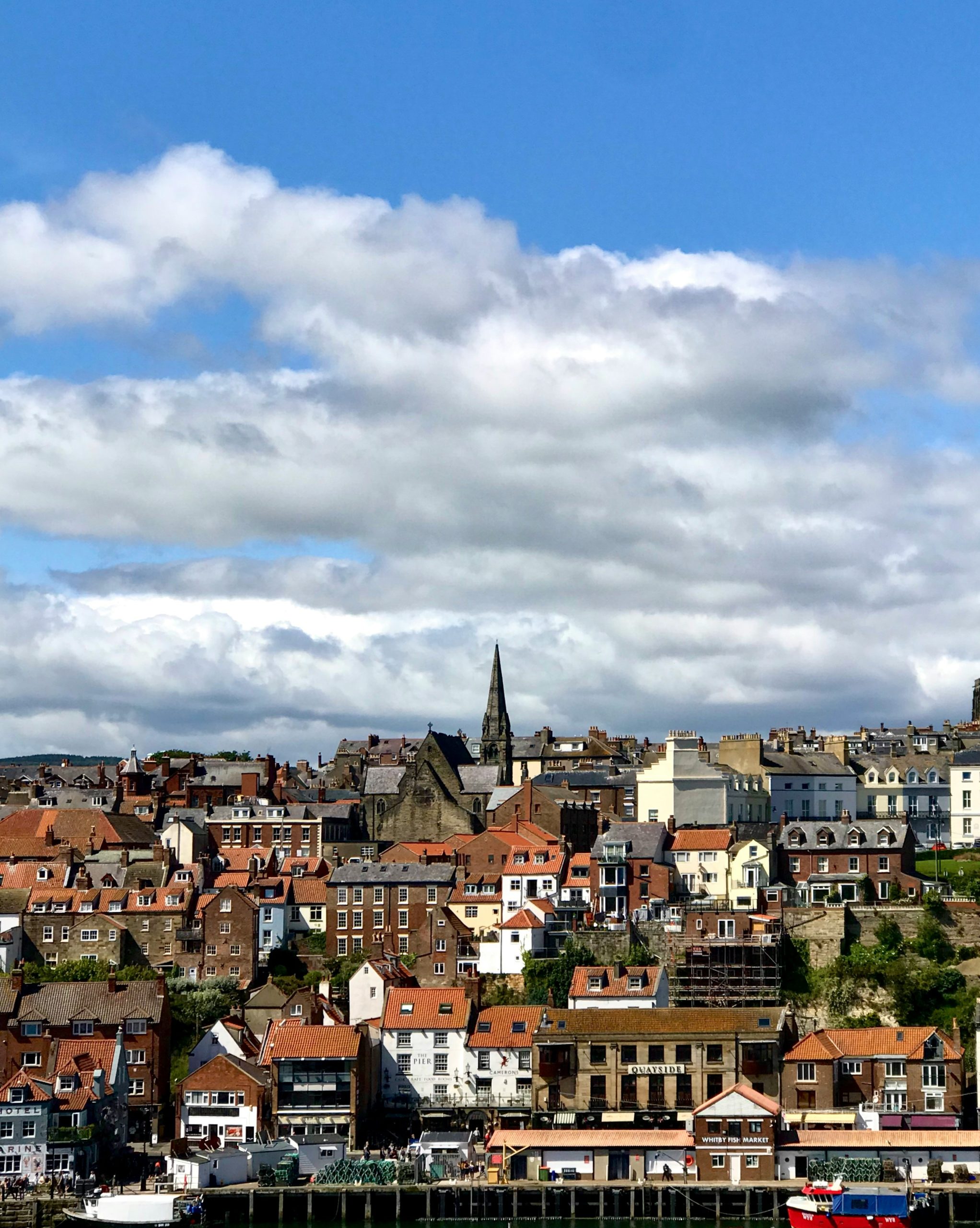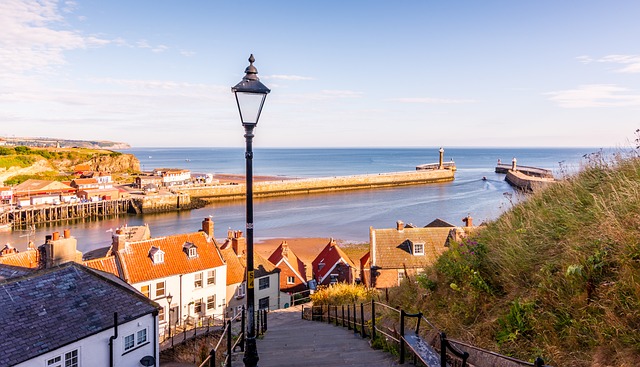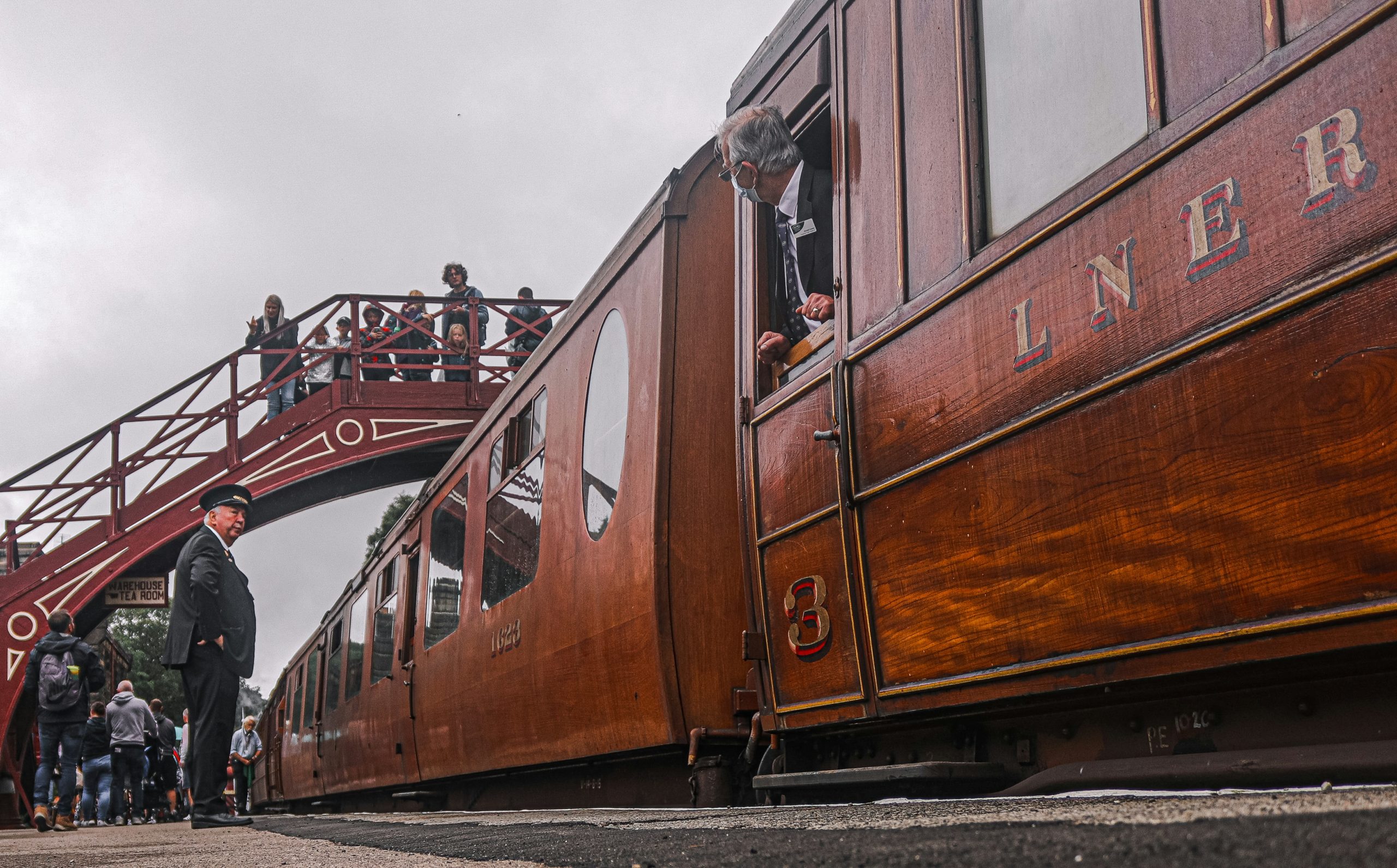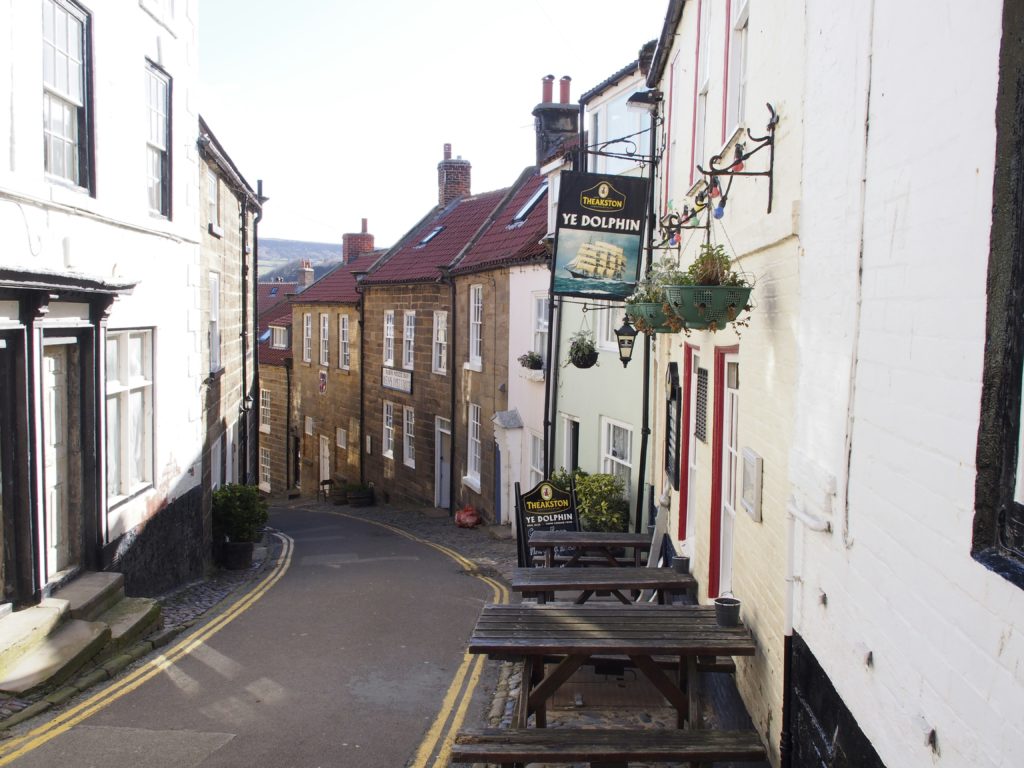Whitby
Burrowed on England’s North East Coast, the charming town of Whitby offers a unique blend of history, culture, and natural beauty. With its intriguing connections to Captain Cook and the inspiration for Bram Stoker’s “Dracula,” Whitby is a town like no other. The Gothic ruins of Whitby Abbey stand majestically on the East Cliff overlooking the North Sea, while the Church of St. Mary beckons visitors up the iconic 199 steps. Explore the picturesque fishing villages of Staithes and Robin Hood’s Bay, relax on the unspoilt sandy beaches of Sandsend and Runswick Bay, and admire the breathtaking views from the clifftops at Ravenscar. Whitby’s rich history is evident in its cobbled streets, historic Market Place, and lively Sandgate. The town’s maritime heritage is celebrated with the Whale Bone Arch and the bronze statue of Captain James Cook, a Yorkshireman renowned for his exploration voyages. Whether strolling through the quaint alleyways or enjoying the scenic bridleways of the North York Moors National Park, Whitby offers a delightful blend of past and present for visitors to explore and enjoy.


As you wander through the ancient streets of Whitby, you’ll be transported back in time to a place where history comes alive. The town’s two distinct parts, divided by the River Esk, showcase its rich heritage and cultural significance. From the founding of Whitby Abbey in 656 AD to the bustling Market Place dating back to 1640, each corner of Whitby tells a story of its past. The narrow alleyways and historic buildings of Church Street reveal a time when smugglers roamed the cobbled streets, evading customs men and press gangs. Discover the legacy of Whitby jet, fashionable since the Victorian era, and visit the Whitby Jet Heritage Centre to delve into the town’s unique heritage. At the top of Khyber Pass, stand beneath the iconic Whale Bone Arch and gaze at the bronze statue of Captain James Cook, a testament to Whitby’s maritime history and its connection to renowned explorers. Whitby’s vibrant past and picturesque setting make it a destination that captivates visitors with its timeless charm and fascinating tales of yesteryears.
How to get there
You can travel to Whitby by plane, bus, ferry, train or car.
By plane: flying into the UK? Consider landing at Leeds Bradford Airport, Durham Tees Valley Airport, or Newcastle International Airport for convenient access to the picturesque Yorkshire coast.
- By bus: if you prefer taking the bus to Whitby, you can hop on board the excellent Yorkshire-based service, the Coastliner bus. This service operates regularly and provides a wonderful opportunity to admire the stunning Yorkshire landscape. In 2018, it was awarded the title of Britain’s Most Scenic Bus Route.
- By ferry: look for the northern ports on the east coast. Hull Ferry Terminal or Port of Tyne International Passenger Terminal are a good place to start.
By train: trains to Whitby travel along the North Yorkshire Moors Railway, passing through the Esk Valley and the villages of Goathland and Castleton before arriving a short distance from the harbour. One of England’s earliest railway stations, Whitby train opened in 1836, offering horse-drawn services to Pickering.
By car: Traveling to Whitby by car is straightforward, with the A171 serving as the main route in and out of town. Approaching from the North offers scenic views, while traveling from Scarborough along the A171 showcases the picturesque coastline. Those arriving from the South and West can reach Whitby via the A64 and A169, with ample parking options upon arrival for exploring the town.

Things to do

Whitby Abbey
For over 700 years, the majestic 13th-century Gothic abbey has loomed over Whitby, offering breathtaking views of the coast and town as you wander through its sprawling ruins. Originally established around AD 657 by King Oswy of Northumbria, the abbey was later reestablished following the Norman Conquest and served as a focal point of spiritual life until its dissolution in 1539. Through the passage of time, the abbey has weathered the elements and conflicts, leaving behind a tapestry of history waiting to be uncovered and explored.
Visitor Centre and Museum
The visitor center is located in a historic 17th-century mansion. Upon entering, you will discover a modern museum showcasing the abbey’s history through artifacts such as Anglo-Saxon crosses, medieval manuscripts, and a unique signed edition of Bram Stoker’s ‘Dracula’. Additionally, the visitor center features a shop where you can find a special keepsake from your visit. If you’re in need of refreshment, be sure to visit the new coffee shop conveniently situated near the entrance.
Whitby Brewery
The top nightlife spot in Whitby, is an authentic micro-brewery offering indoor and outdoor seating with live music next to the Abbey. Enjoy excellent beers, guest lagers, and spirits at great value. Alan prepares delicious pizzas and shares insights on the brewery’s history. Reasonably priced drinks and pizzas make it a must-visit. Dog-friendly with lovely staff, this well-thought-out business offers a lively atmosphere with local brews, pizzas, and live music. A fantastic place to relax and enjoy.
The Hare & Hounds
Is a friendly countryside tavern that provides a warm and inviting ambiance. This eatery accommodates various dietary preferences with its vegetarian, vegan , and gluten-free choices. The interior is decorated with charming hare & hound themed artwork and decorations, enhancing the cozy vibe. Patrons have also praised the pet-friendly policy, making it an inclusive spot for all guests.
The Dolphin Hotel
Offers prime harbor views from its central location, providing easy access to Whitby Abbey, Dracula Experience, Captain Cook Museum, and more. Enjoy their diverse selection of local cask & craft ales, ciders, and wines. Indulge in delicious local pub fare, including breakfast and traditional Sunday lunch menus.
